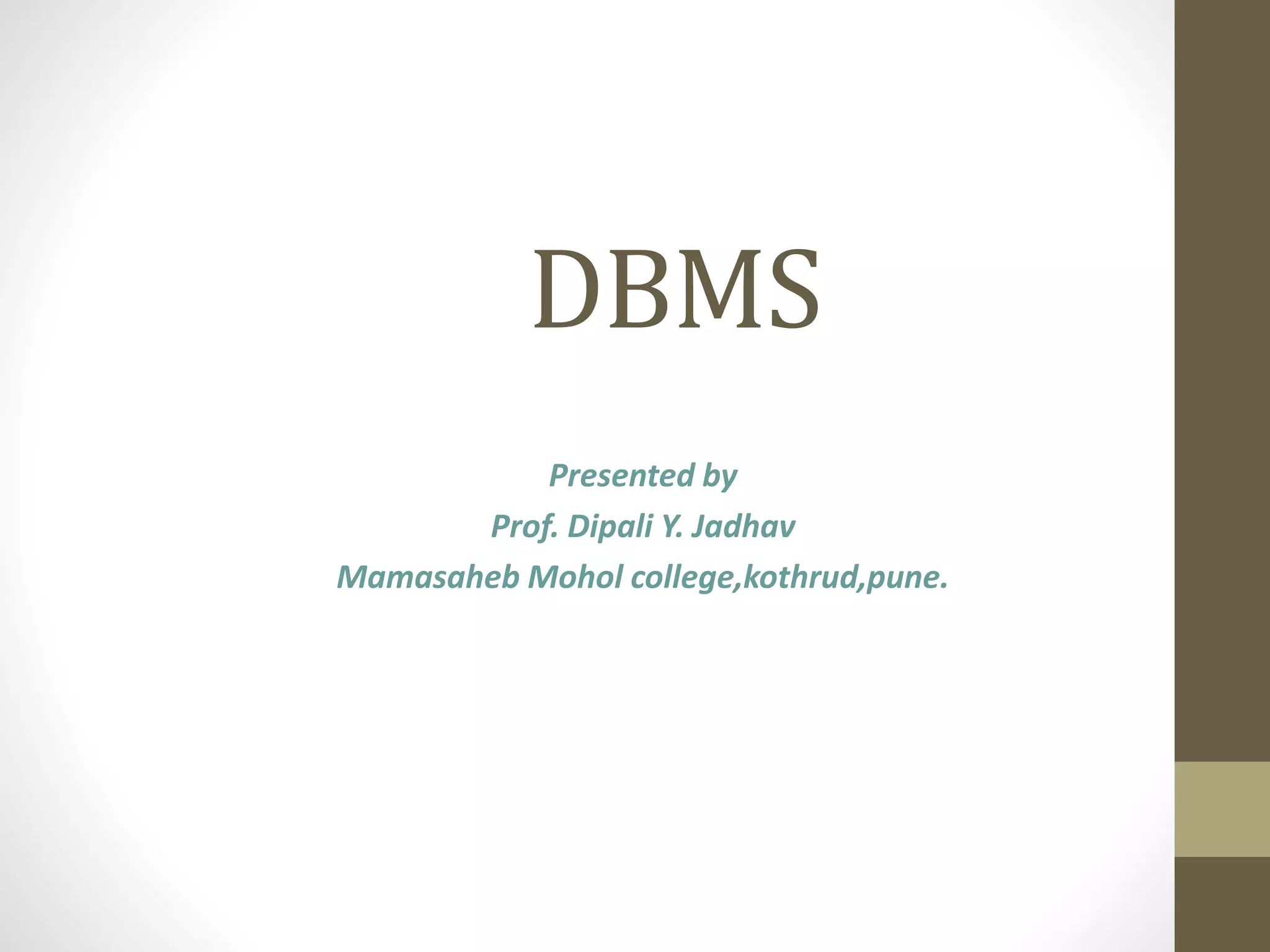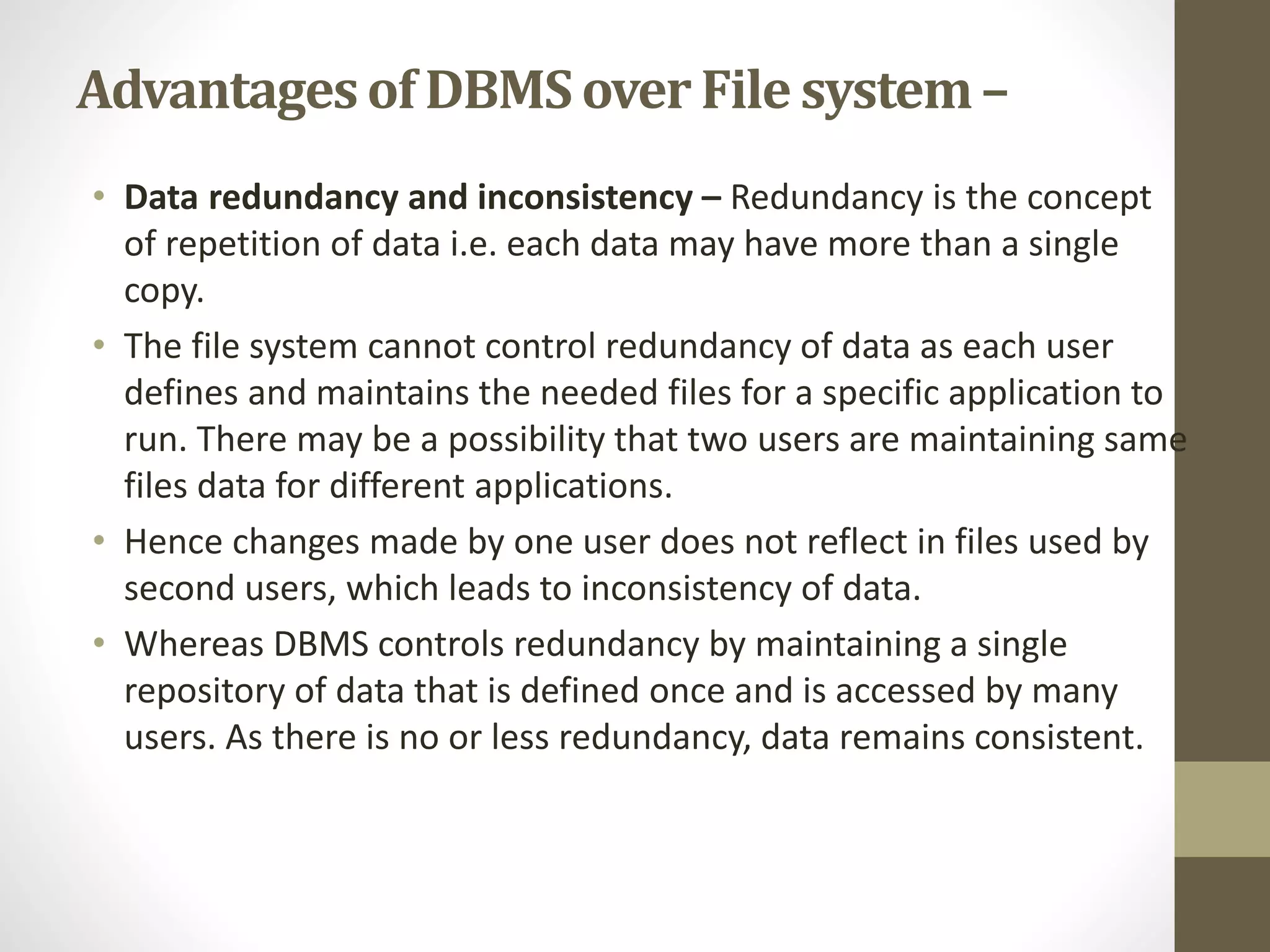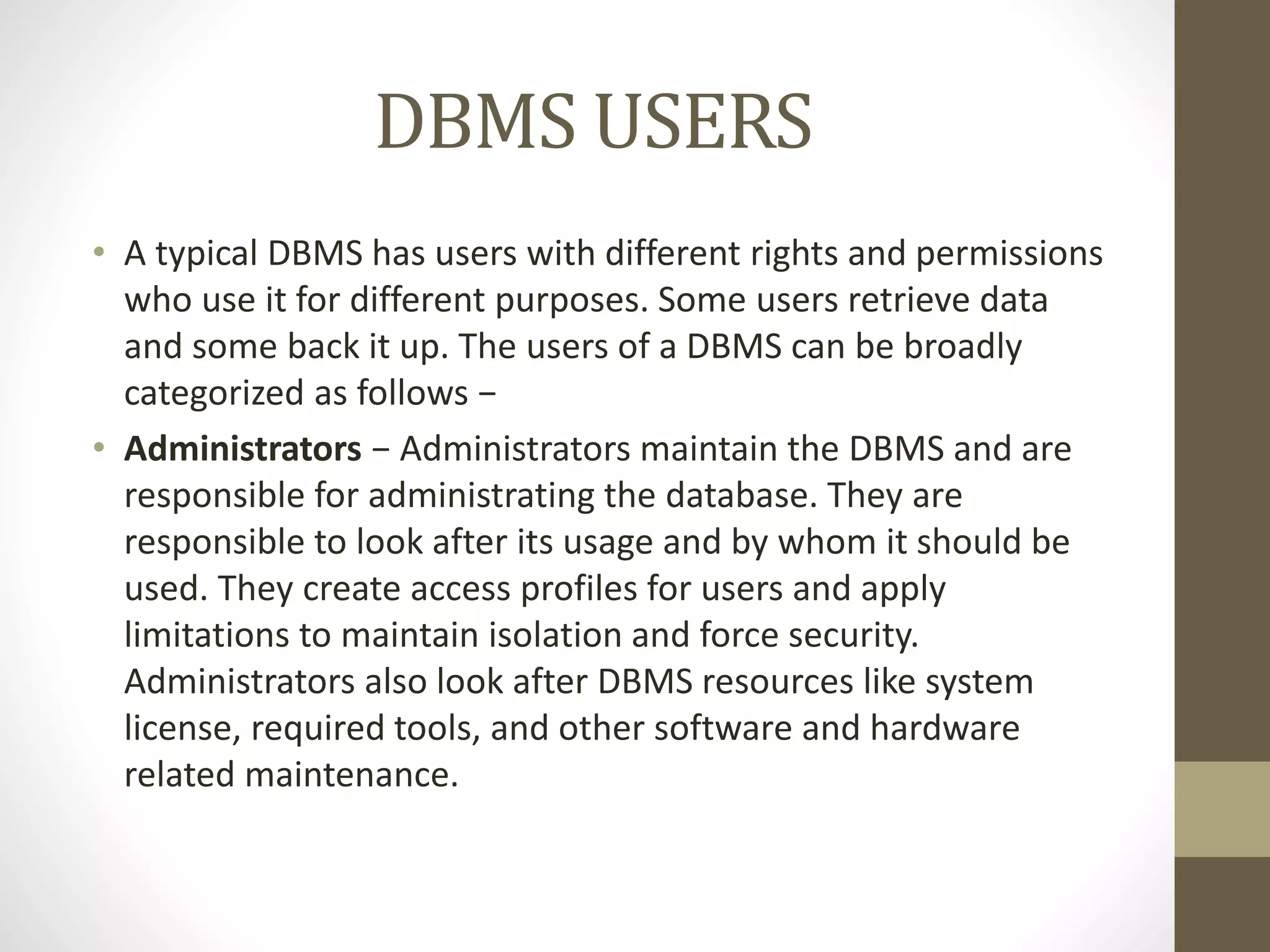This document provides an overview of database management systems (DBMS). It defines data and databases, and explains that a DBMS organizes data into tables and indexes to make it easily accessible. A DBMS offers advantages over file systems like reducing data redundancy, improving data sharing and concurrency, and enforcing data integrity. The document also describes the typical structure of a DBMS and roles of users like administrators, designers, and end users.












